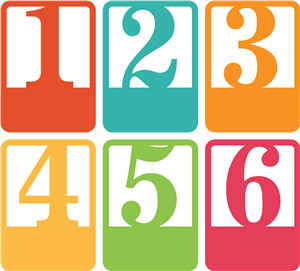Highest and Lowest
Problem
How about trying with numbers 1, 2, 3, 4, 5 and 6?

Student Solutions
We had just a few submissions to this challenge.
Brodie & Tully from St Patrick's School Macksville NSW in Australia sent in the following;
Highest
(4-3+5)x6=36
Lowest
6/3+4-5=1
(4-3+5)/6
Highest-1, 2, 3, 4, 5, 6
(3+4)/(2-1)x5x6=210
Lowest
(4-3)x2/1+(5-6)=1
M, T and G (Y3) from Monteney Primary School, Sheffield wrote;
M, T and G say that to make the greatest possible total you need to "multiply all the numbers together but not one" Multiplying all of the numbers 2, 3, 4, 5 and 6 together generate a total of 720.
2 x 3 = 6
6 x 4 = 24
24 x 5 = 120
120 x 6 = 720
If you add one to your total you get a total of 721.
720 + 1 = 721
M, T and G said that you add one to make the biggest total, because if you multiplied your total by one then your answer of 720 wouldn't change.
Ashkan from Gorsefield Primary wrote;
The highest I found was:
3 - 4 + (5 x 6) = 29.
I did 5 x 6 which = 30. Then I did 3 - 4 which is -1. Finally I did -1 + 30 = 29.
The lowest I found was:
3 - 4 + (5 / 6) = 0.167
I did 5 / 6 = 0.833. Then I did 3 - 4 = -1. Finally I did -1 + 0.833 = 0.167.
Kestrel class at Churchfields, the Village School in Wiltshire, wrote:
We decided that we had to keep the numbers in order.
At first we could use the operations as many times as we wanted.
Our highest score was 360
3 x 4 x 5 x 6 = 360 (I wonder why you didn't use the 2 as well...)
Our lowest score was -117.
3 – (4 x 5 x 6) = -117
At first we experimented with division before we realised that negative numbers were lower.
Then we decided to see what would happen if we could only use each symbol once (but we kept the numbers in order).
Our highest score was 34.5.
(3 ÷ 4 + 5) x 6 = 34.5
Our lowest score was -51.
3 – ((4 + 5) x 6) = - 51
Thank you, Kestrel class. What a good idea to decide on particular 'rules', like having the numbers in order, or using each operation once.
Thank you for all these different solutions. You may like to think about the ideas in each solution and whether you can improve on them.
Teachers' Resources
Why do this problem?
Possible approach
The children can vary the order themselves either working in pairs or individually. After a short period of independent work ask some of the children to explain their thinking to the others before continuing to see what the highest and lowest possible solutions are.
Having tried this challenge, many children will be able to explore further some of the attributes associated with the four rules of number and place value.
Key questions
How do you know that this is the biggest possible answer?
How do you know that this is the smallest possible answer?
